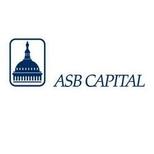 by Michael Tarsala
by Michael Tarsala
If you’re a retiree, you probably still need stocks as a big chunk of your investments.
People make mistake of dropping stocks completely at age 55 or 60, says Susan Garland, editor of the Kiplinger’s Retirement Report.
You do want to decrease your stock exposure as you age, sure.
But you cannot drop them: Stock gains can help sustain your nest egg if you live to 75 or older. They’re inflation fighters, and the dividends they provide can be a source of income. Garland says the rule of thumb is that 100 minus your age should roughly be the percentage of stocks in your portfolio.
Here’s what Bill DeShurko, manager of the Dividend and Income Plus investment model at Covestor, had to say about stocks for retirement:
I’ve been a registered rep and RIA for over 25 years. I’ve seen all the different products, heard all the pitches and still feel that the single best way for a retiree to invest is by using a portfolio of dividend-paying stocks.
The single biggest issue I face with retirees is the instilled attitude that you have to beat the market at all times, even over short time periods. They all want to benchmark to the S&P 500.
The trouble with this is that over the past 12 years the S&P 500 has lost over 40% twice. For someone who is pulling 5% out of their original investment, these types of losses all but guarantee that they will run out of money before retirement. A retiree absolutely must manage their portfolio to do two things: Generate income regardless of market value, and manage the portfolio’s volatility.
Low interest rates, volatile market, and a little bit of greed leads retirees to want to believe in sales pitches. Inside the broker industry, variable annuity sales are huge. The sales pitches of guaranteed income and stock market returns, (which is too good to be true), has retirees pouring money into complicated products with extremely high fees and surrender charges, that are most likely to disappoint down the road.
The newest trend is to add managed futures accounts into variable annuities. The sales pitch for the investor is the non-correlation of returns. The pitch to the registered rep is even higher commissions. These are extremely high fee products with no track record. Very few middle market ($150,000 – $1,000,000) accounts should be in these products. With the hedge-fund-like fund expenses and the variable annuity fees, there is very little room for error on the investment managers part to deliver consistent returns to the investor.
Photo by: 401(K) 2012


